
Sub-$6K Theater Delivers Satisfaction
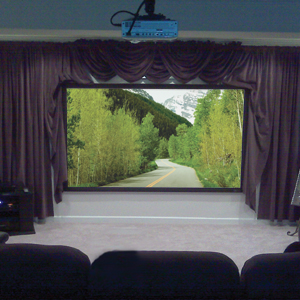 CIS - Charlotte's Source For Home Theater Installation/Design This budget-friendly home theater, and its 106-inch screen, provided the finishing touch to a finished basement.
One of the first things Phillip Thomas did after buying his 3,300-square-foot single-family home was finish the basement. He put in a bar, built a bedroom for his college-age son and threw in a nice-size bathroom. But he always felt that something was missing: a home theater.
“At the time, I thought that adding one would blow our budget out of the water,” Thomas says. So he and his family waited. After a few months of saving up, they contacted a local custom electronics professional for a quote. “They had a very firm budget of $10,000,” recalls Jason White of Commtech in Germantown, Md. “It was small, but it gave me some very clear parameters to work with.”
Since the basement was already finished and furnished, all of the money could go toward audio/video equipment and installation. That didn’t mean, however, that White could go crazy with the cash. “I had to be very careful about the products I selected,” he says. Obviously, the price of each component would need to fit the budget. But it was also important that the products chosen could be installed easily and would require minimal programming, White says. Oh, and the equipment would need to perform to the family’s expectations.
One of those expectations was a huge display. “I would settle for nothing less than 100 inches,” says Thomas. Consequently, the largest portion of the budget, $1,000, was allocated to a 106-inch projection screen from Draper. To avoid going over budget, fancy accessories like a motor that allows the screen to roll down from the ceiling were excluded.
A 720p Optoma projector finished off the projection system. Although it lacks the Full HD resolution of a 1080p model, it saved the Thomases more than $2,000. White made sure to run HDMI (high-definition multimedia interface) and extra Category 5 cabling to the projector location “just in case the Thomases ever decide to upgrade,” he says. The entire video setup came in at $2,000, which was about the same price as a much smaller 65-inch plasma or LCD TV.
White also stuck with the basics when it came to the audio/video receiver. The Denon AVR-590 is a quality piece, he says, but with one missing feature: HDMI upconverting. White explains, “A receiver with HDMI upconverting requires just one HDMI cable between the receiver and the projector. With it, any signal from any component will be upconverted to the 720p resolution of the projector.” The “HDMI switching feature” of the AVR-590, on the other hand, required White to route several additional cables from each component to the projector. The switching feature simply allows the signal from the connected source components to pass through to the projector without any enhancement in resolution. It was a minor sacrifice, White says, to save nearly $1,000.
Two fewer speakers would need to be purchased by going with a 5.1 surround-sound setup instead of a 7.1 system, and in-ceiling models would minimize the cost to have them installed.
“It’s usually easier to fish wiring through the ceiling to in-ceiling speakers than go through the ceiling and down the wall to install in-wall speakers because there are fewer obstacles,” says White. “It takes no more than five minutes to install an in-ceiling speaker compared to anywhere between 20 minutes to two hours for an in-wall model.” The 75-watts-per-channel rating of the five Proficient units may be less than the 100-watts per channel of the company’s higher-end units, but the Thomases saved $1,500 by sticking with the mid-grade models.
A final contributor to the savings was a stripped-down control device. The only two source components in the theater are a DirecTV satellite receiver and an upscaling DVD player, so the family didn’t need anything fancy, and so programming the URC MX-900 remote was basic.
Equipment
Draper 106-inch Onyx Matte White Screen ($999)
Optoma HD65 Home Theater Projector ($800)
Denon AVR-590 Home Theater Receiver ($350)
Panamax M4300 Power Manager ($249)
DirecTV HD Receiver (already owned it)
Samsung 1080P9 DVD Player ($90)
Proficient C660 LCR In-Ceiling Speakers ($580)
Proficient S10 Subwoofer ($249)
URC MX-900 Remote ($299)
Xantech IR Kit ($99)
Proconnect Cables ($420)
Consultation and Design Time ($1,500)
by Lisa Montgomery
http://www.electronichouse.com/article/sub-6k_theater_delivers_satisfaction/
Custom Installation Services, LLC – Audio/Video Sales, Service and Installation in North Carolina and South Carolina
Posted in 3D TV, Home Theater, Media Rooms, Music and Movies
|
Tagged 3-d, 3d, audio advice, basement theater, Best Buy, Charlotte, custom home builders in lake norman, HD installers in Charlotte nc, hd theater, high end audio, Home Theater, home theater furniture, home theater setup, home theater wiring, Media Rooms, Mooresville, Samsung, samsung ln46c650, tweeter charlotte, zobo
|
4 Tips for Cleaning Screens
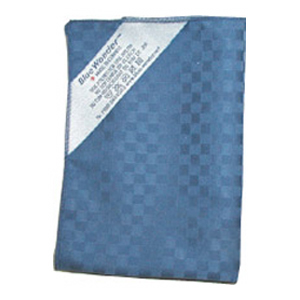 C.I.S. - Charlotte, NC's Home for Samsung TV Installation and Service! Here are some tips and products to keep your displays, cell phones and remotes controls streak-free and spotless.
With spring just around the corner, it’s time to clear away the cobwebs and get your house back in shape.
In addition to windows, walls and floors, your spring cleaning project should also include TV screens, iPods and remote controls.
What’s the best way to de-grime them? Here are a few products we’ve run across as well as tips from custom electronics professionals.
1. “Most cleaners—even soap and water—are either too harsh or leave water spots on the surface,” says Joshua Huffman of RG Convergence Technologies in Raleigh, N.C.
“Keeping this in mind, we use microfiber cleaning cloths from Blue Wonder.” They’re a little pricey at $6.50 a cloth [check site for current price range], but they’re reusable and won’t scratch the surface of the screen (www.bluewondercloth.com).
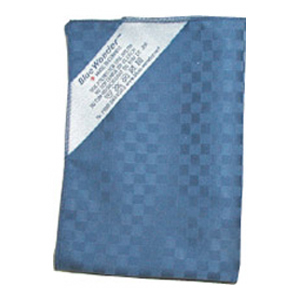
2. You can protect your remote from gunk build-up by fitting a clear cover over it. If your kids’ messy hands to find the remote, you can easily wipe away the grime with a sanitary wipe or household cleaner.
3. Jayson Small of Adobe Cinema & Automation, Mashpee, Mass., recommends laying an anti-glare film ($15 from the Apple store) on the screen of your iPod, iPhone, iPod touch or iPad. “This will protect the screen from scratches and can easily be cleaned with a dry or slightly damp microfiber cloth.”
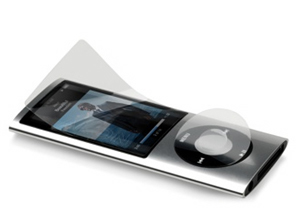
4. Most of us have gone through a cell phone or two due to water damage. A product called the Bheestie Bag ($20, www.bheestie.com) promises to dry out electronic devices. You just take out the battery, drop the device into the bag and let it sit overnight. The company says it can be used for products such as iPods, too. Water absorbing beads pull out the moisture. Does it work? We haven’t tried it, so we’d love to hear from someone who has. Email us.
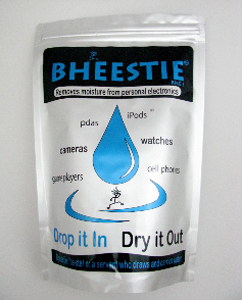
by Lisa Montgomery
http://www.electronichouse.com/article/4_tips_for_cleaning_screens/
Custom Installation Services, LLC – Audio/Video Sales, Service and Installation in North Carolina and South Carolina
Posted in Flat Panel TV's, Home Theater, Media Rooms, News
|
Tagged audio advice, audio video, Best Buy, charlotte nc, custom, designers, hd, high end audio, Home Automation, Home Theater, installers, lighting control, lutron marantz speakercraft, magnolia, Media Rooms, mooresville nc, Samsung, tv installation, whole house music, whole house stereo
|
10 Ways to Be a Good Customer
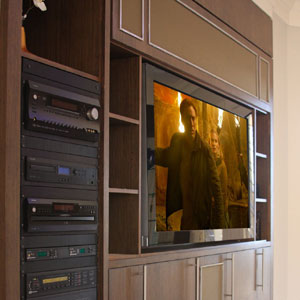 How to work with your custom electronics professional to ensure that your project is successful. How to work with your custom electronics professional to ensure that your project is successful.
Whether you’re planning on adding a home theater, want to create curb energy use or need electronic systems that’ll make your life more efficient and convenient, it pays to be a good customer.
According to custom electronics professionals (CE pros), there are certain things you can do to ensure that the project runs smoothly and that the technology his firm designs and installs for you satisfies all your needs. In speaking with CE pros throughout the years, I’ve come up with a list of 10 ways to guarantee high-tech success in your home.
1. Know your priorities. What’s your biggest hot button? Is it watching movies in high-def or having music play wherever you go? Maybe you’re more concerned with streamlining the control of the lights in your house. List your priorities from top to bottom, and get every member of your family involved in the process. This will help your CE pro decide where to focus the bulk of your budget.
2. Have a budget. Speaking of budget, it’s a good idea to at least have a ballpark figure in mind. If you know approximately how much you can spend, your installer will have an easier time picking out products that’ll meet both your priorities and your budget.
3. Share your story. Believe it or not, your lifestyle, schedule and routines are of interest to your CE pro. The fact that you wake up at 7, work until 6 and go to bed at 11 may seem mundane to you, but information like this is critical to the workings of your systems. With it, your CE pro will be able to set up a schedule for the lights and thermostats to adjust automatically throughout the day.
4. Attend meetings. Particularly for projects where technology will be installed during the construction of a home, it’s common for the CE pro, architect, builder, interior designer and other subcontractors to meet weekly. It’s helpful if you also attend these meetings. You’ll be able to share your input and answer any questions they might have.
5. Maintain contact. It’s inevitable that you’ll run into a few hiccups during the project. Be sure that your CE pro is able to reach you to throughout the project so collectively you can decide how to proceed.
6. Be willing to compromise. Some of hiccups may require some form of compromise. For example, the perfect spot for viewing your built-in TV might have a heating duct in the way. Your CE pro, will likely suggest a different location. Hear him out and be willing to deviate from the original plan.
7. Stay the course. There’s nothing more difficult for a CE pro to deal with than a client who changes his or her mind continually during the course of a project. Asking for a different product, like a larger TV, can often jeopardize the entire project. In this case, your CE pro may need to modify the size of the cabinet, readjust the position of the speakers and maybe even redo the construction plans so that the room can accommodate a larger screen. All this will cost you time and money.
8. Do your homework – but not too much. It’s always a good idea to educate yourself before undertaking any project, but understand that your CE pro know which products work best together and which don’t. Even though you’ve read nothing but good reviews on a certain surround-sound receiver, for example, it may not be the right one for your type of A/V system. Leave product selection to your CE pro.
9. Expect follow-up. The more you live with your systems, the more you understand how you’d like the electronics to perform. For example, the 50 percent brightness setting you and your CE pro originally agreed on for the hallway lights may seem too dim after you’ve lived in your house for a month or two. Expect your systems to be tweaked a few times after the installation is complete.
10. Spread the word. If your CE pro does a good job, tell other people about it. Word-of-mouth is the best form of advertising. Who knows—if you connect your CE pro with a new customer, he just might give you a deal on your next project.
by Lisa Montgomery
http://www.electronichouse.com/article/10_ways_to_be_a_good_customer/C227
Custom Installation Services, LLC – Home Theater, Audio and Video Services, Home Automation in North Carolina and South Carolina
Posted in Audio Systems, Flat Panel TV's, Home Theater, News
|
Tagged audio advice, Best Buy, central vac dealers in charlotte nc, Charlotte, custom home builders in charlotte nc, custom home builders in lake norman, frank betz house plans, geek squad in charlotte nc, Home theater installers Lake Norman, Mooresville, multiroom audio, Samsung, Speakercraft, surround sound, whole house audio
|
|
|
|








 How to work with your custom electronics professional to ensure that your project is successful.
How to work with your custom electronics professional to ensure that your project is successful.